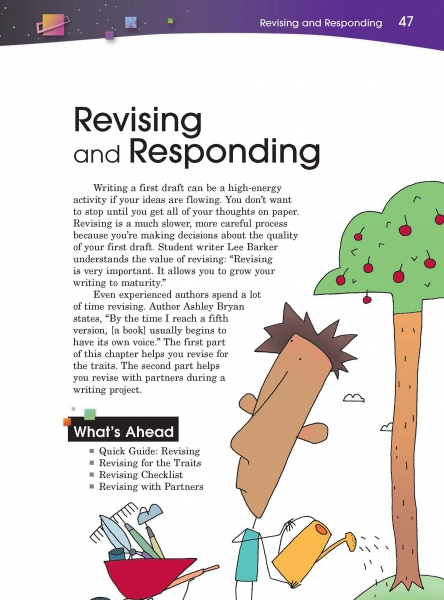Page 047 from

Start-Up Activity
Revising is the important third step in the writing process in which writers make their writing clearer, more complete, and more effective. When revising, students should first address big-ticket items such as the ideas and organization of their writing before turning their attention to specific words and sentences.
Ask students what revising means to them. During your discussion, disprove the notion that checking for conventions is part of the revising process. Point out that this becomes more important during the editing step. Then have a volunteer read aloud the introductory page.
Think About it
“If you haven’t revised, you’re not finished.”
—Patricia T. O’Conner

Start-Up Activity
Revising is the important third step in the writing process in which writers make their writing clearer, more complete, and more effective. When revising, students should first address big-ticket items such as the ideas and organization of their writing before turning their attention to specific words and sentences.
Ask students what revising means to them. During your discussion, disprove the notion that checking for conventions is part of the revising process. Point out that this becomes more important during the editing step. Then have a volunteer read aloud the introductory page.
Think About it
“If you haven’t revised, you’re not finished.”
—Patricia T. O’Conner



